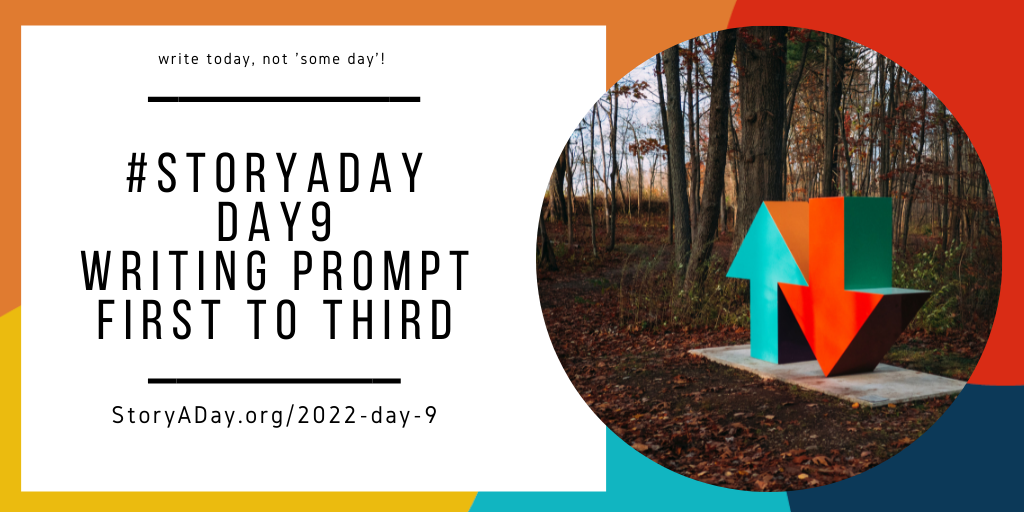The Prompt
Re-write yesterday’s story, in a different point-of view.
Keep the same protagonist, but take us into a different voice.
Where, yesterday, you might have written, “I slammed the door as I left, hearing a muffled ‘hey!’ from behind it. But seriously, how could he have said such a thing, and expected me to stay?” today you might write it from the third-person, limited point of view, which would read like this: “she slammed the door as she left, hearing a muffled ‘Get back here!’ from behind it. But seriously, how could he have said such a thing and expected her to stay?”
Notice how similar third-person limited is to first person? We’re still experiencing the thoughts of only one person. We are very closely aligned with their thoughts and feelings. We don’t need the writer to say ‘she thought’, because it’s always clear whose thoughts we are in.
The advantage of third person is that you can use a line break to indicate a perspective shift and hop inside another character’s head.
“She slammed the door as she left.”
#
The walls shook as the door hit the frame. He yelped with a surprise that quickly turned to anger. Half out of his chair, he yelled “Get back here”. The only answer was the click of her heels on the wood of the stairs and the echoing slam of the front door. A wave of shame pushed him back into the sagging armchair. How could have have said those things to her and expected her to stay?
#
The air outside was icy and cut into her lungs like broken glass. Where would she go now? Surely anywhere was better than here. Fresh snow crunched under the ridiculous heels he had insisted she always wear …
—
You can stay in one person’s perspective or jump around, just remember, which ever head you’re in, that’s the one the reader will identify most closely with. It’s best not to jump around too much and leave your reader seasick!
Julie Duffy
Julie Duffy likes to write in first person but appreciates the opportunities afforded by third. If she is being honest, what she really loves is a really well done third-person omniscient story as employed by Messers Dickens and Pratchett. You can read more StoryADay Point of View writing prompts here.

Join the discussion: what will you do with today’s prompt OR how did it go? Need support? Post here!




![[Writing Prompt] First Person Practice](https://storyaday.org/wp-content/uploads/2012/04/I-eye.jpg)

